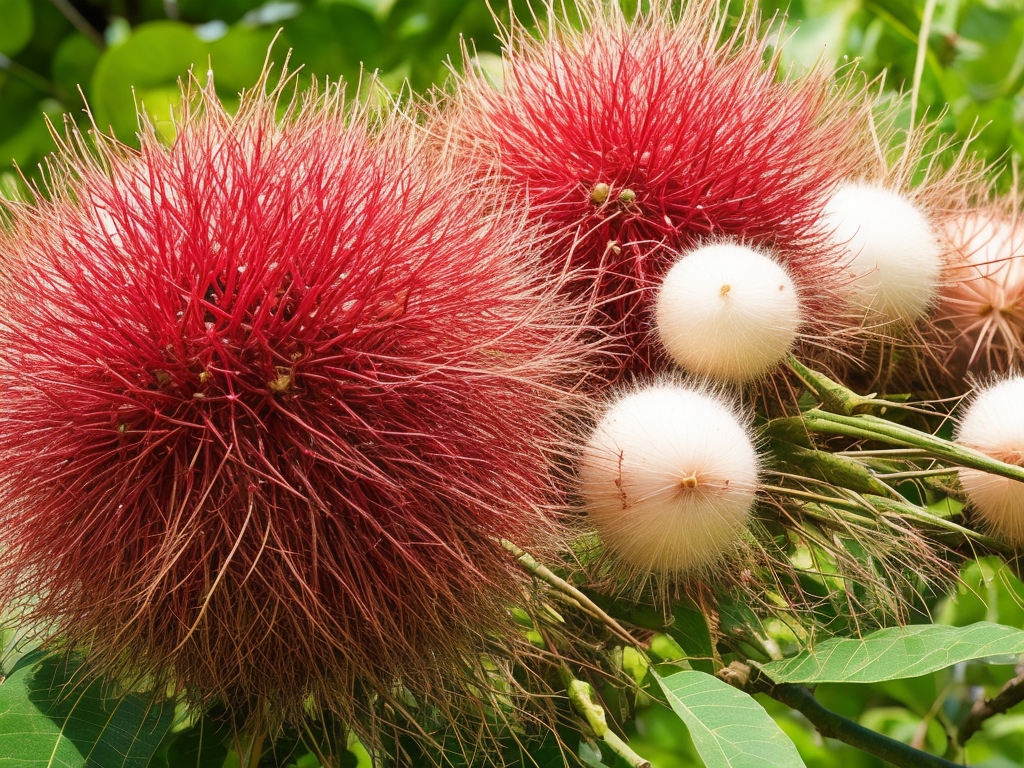If you’re on the hunt for a fruit that not only tastes delicious but also boasts a host of health benefits, and side effects, look no further than the rambutan. Packed with vitamin C, fiber, and copper, this exotic fruit is a nutritional powerhouse.
Its abundance of antioxidants helps fight inflammation, while its low glycemic index makes it an ideal snack for maintaining healthy blood sugar levels. But, like anything, there may be a few side effects to watch out for.
So, whether you’re curious about the incredible benefits or want to know how to properly enjoy this nutritious fruit, read on for all the details on rambutan.

Rambutan Benefits
Rich in Vitamin C
Rambutan is a tropical fruit that is known for its abundance of Vitamin C. Just one serving of rambutan can provide you with a significant portion of your daily recommended intake of Vitamin C.
This essential nutrient plays a crucial role in maintaining a healthy immune system, as it helps to boost the production of white blood cells and antibodies.
Vitamin C is also a powerful antioxidant that helps to protect your cells from damage caused by free radicals, which can lead to chronic diseases such as heart disease and cancer.
Incorporating rambutan into your diet is a delicious way to ensure that you are getting your daily dose of this important vitamin.
High in Fiber
Fiber is an important component of a well-balanced diet, as it helps to support a healthy digestive system and maintain regular bowel movements. Luckily, rambutan is a rich source of dietary fiber.
Including rambutan in your diet can help to prevent constipation and promote healthy digestion. Additionally, a diet that is high in fiber has been associated with a reduced risk of various chronic diseases, including heart disease, type 2 diabetes, and certain types of cancer.
By adding rambutan to your daily routine, you can easily increase your fiber intake and reap the benefits of a healthy digestive system.
Source of Copper
Rambutan is not only delicious but also a good source of copper. Copper is an essential mineral that plays a vital role in various bodily functions.
It is involved in the production of red blood cells, the maintenance of a healthy nervous system, and the formation of collagen, which is a protein that supports healthy skin, bones, and connective tissues.
Consuming rambutan can help to ensure that you are meeting your daily copper requirements and promoting overall health and well-being.
Packed with Antioxidants
Rambutan is packed with a variety of powerful antioxidants, which are compounds that help to combat oxidative stress in the body.
Oxidative stress occurs when there is an imbalance between free radicals and antioxidants in the body, which can lead to the development of chronic inflammation and various diseases.
The antioxidants found in rambutan help to neutralize free radicals and reduce inflammation, thereby protecting your cells from damage and supporting overall health. Including rambutan in your diet is an excellent way to boost your antioxidant intake and promote optimal well-being.
Rambutan Side Effects
Allergic Reactions
Despite the numerous health benefits of rambutan, it is essential to note that some individuals may experience side effects like allergic reactions to this fruit.
Allergies to rambutan are relatively rare but can cause symptoms such as itching, hives, swelling of the lips or tongue, and difficulty breathing. If you have a known allergy to other fruits, such as lychees or kiwis, you may be at a higher risk of developing an allergic reaction to rambutan.
If you experience any adverse symptoms after consuming rambutan, it is crucial to seek medical attention immediately.
High Sugar Content
While rambutan is a delicious and nutritious fruit, it is important to be mindful of its high sugar content. One serving of rambutan contains a significant amount of natural sugars, which can cause a rapid increase in blood sugar levels.
This can be a concern for individuals with diabetes or those who are watching their blood sugar levels. It is advisable to consume rambutan in moderation and as part of a well-balanced diet to prevent any spikes in blood sugar levels.
How to Eat Rambutan
Choosing Ripe Rambutan
When selecting rambutan, it is important to choose fruits that are ripe and ready to eat. Look for rambutan with bright red or yellow skin that is free from blemishes or bruises.
The skin should also feel slightly firm but not too hard. Avoid rambutan that is overly soft or has discolored skin, as this may indicate that the fruit is overripe or spoiled.
Opening the Rambutan
To open a rambutan, hold it firmly in one hand and use a sharp knife to make a shallow cut around the circumference of the fruit.
Be careful not to cut too deep, as you want to avoid piercing the seed inside. Gently twist the fruit to open it, revealing the white flesh inside.
Removing the Seed
Once you have opened the rambutan, you will see a large seed in the center. To remove the seed, simply slide it out gently using your fingers or a small spoon. Be careful not to damage the flesh while extracting the seed.
Eating the Flesh
Now that you have removed the seed, you can enjoy the delicious flesh of the rambutan. The flesh is juicy and sweet, with a slightly acidic taste.
Simply bite into the flesh and enjoy the unique flavor of this tropical fruit. Alternatively, you can also use a spoon to scoop out the flesh if you prefer.
In conclusion, rambutan is a tropical fruit that offers a wide range of health benefits. From being rich in Vitamin C and packed with antioxidants to providing a good source of fiber and copper, rambutan can be a valuable addition to your diet.
However, it is important to be aware of the potential side effects, such as allergic reactions and its high sugar content. By following the recommended guidelines for choosing and consuming rambutan, you can enjoy this delicious fruit while reaping its many benefits. So why not give rambutan a try and incorporate it into your meals for a tasty and nutritious treat.

Hi, I’m King Phils, a Dragon Fruit enthusiast and blogger. Welcome to my website, where I share everything I know and love about this amazing fruit.